Abstract
The coumarin phytoalexins ayapin and scopoletin accumulate in longitudinal stem sections of sunflower (Helianthus annuus L., Compositae) following inoculation with fungi both pathogenic (Alternaria helianthi) and nonpathogenic (Helminthosporium carbonum) to this plant. Both compounds were induced more rapidly, and they attained higher levels in tissue inoculated with the heterologous pathogen H. carbonum as compared with the sunflower pathogen A. helianthi. Similarly, scopoletin and ayapin accumulated to comparatively low concentrations following inoculation with a second sunflower pathogen, Phoma macdonaldii. Scopoletin was biosynthesized de novo following inoculation, although levels of its glucoside scopolin exceeded those of the aglucone in both infected and control tissues. Both scopoletin and scopolin were routinely detected in trace amounts in uninoculated tissue. In contrast, ayapin was not detected as a component of uninfected plants. When [14C]scopoletin was supplied to induced sunflower stem sections about 36% of the recovered radioactivity was in the form of ayapin. In vitro studies demonstrated that A. helianthi possessed the ability to rapidly degrade both scopoletin and ayapin, whereas H. carbonum was much less efficient in these traits. The differential degradation of these compounds by phytopathogenic fungi which do not attack sunflower is also discussed.
Full text
PDF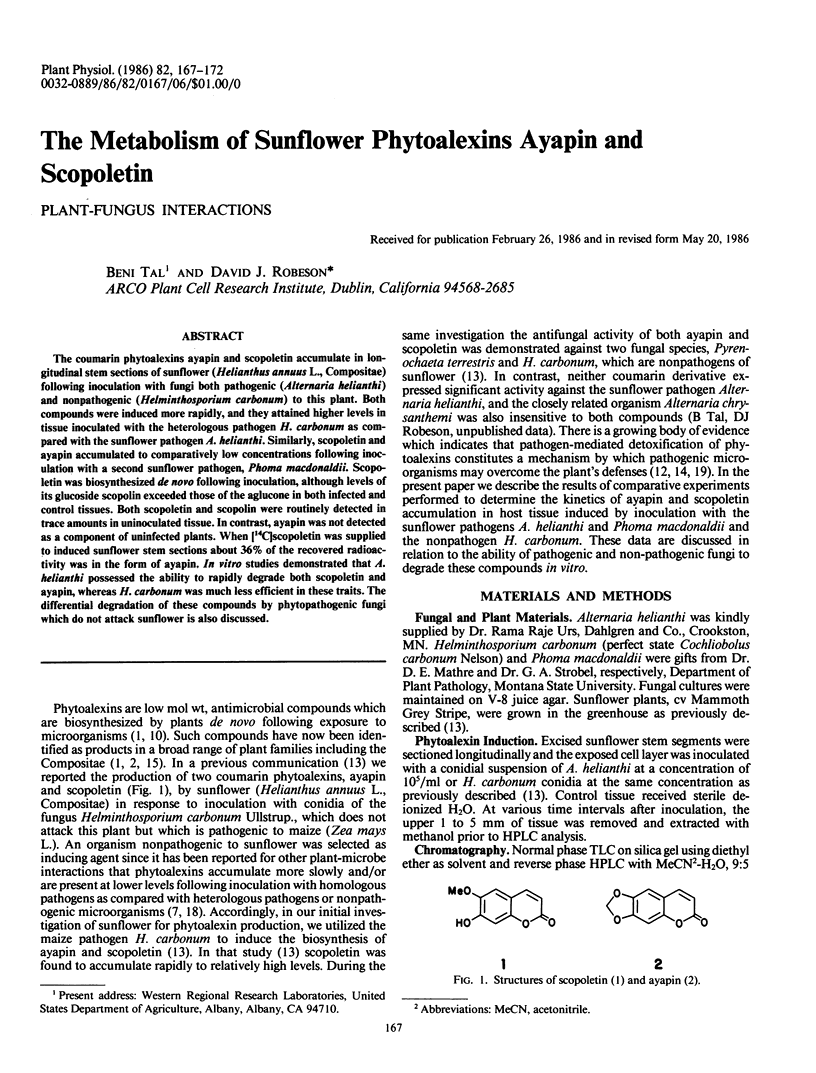
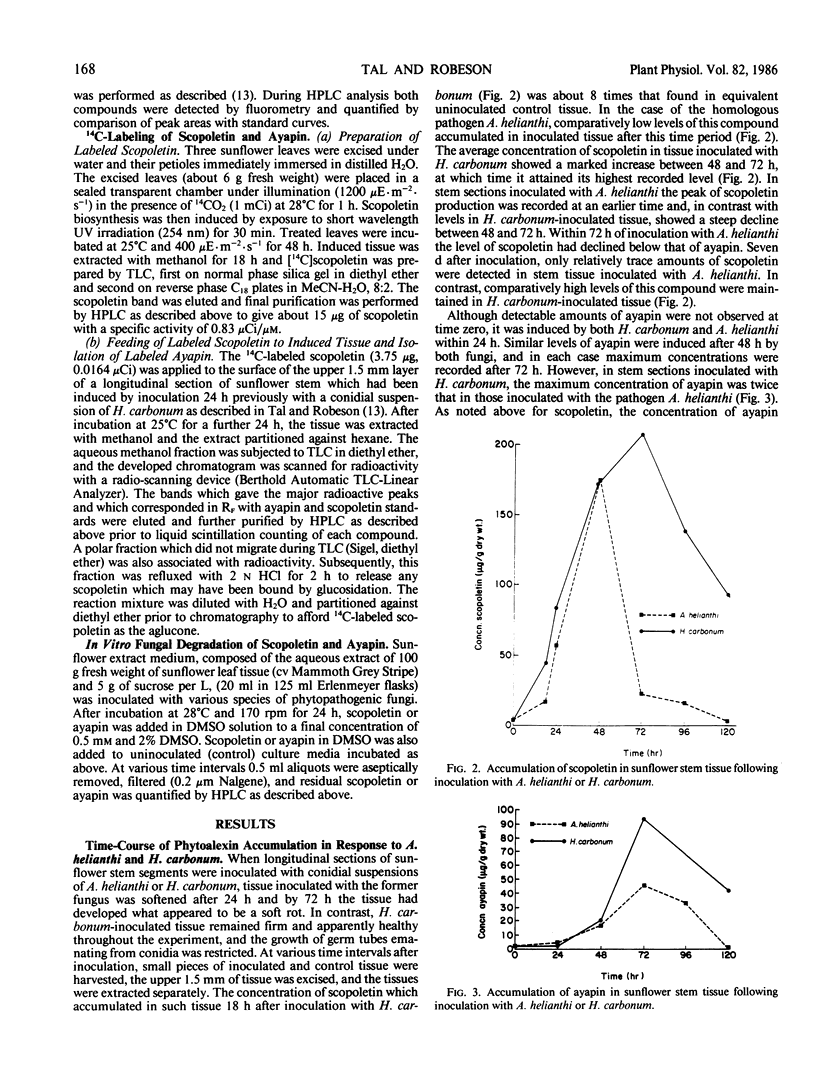
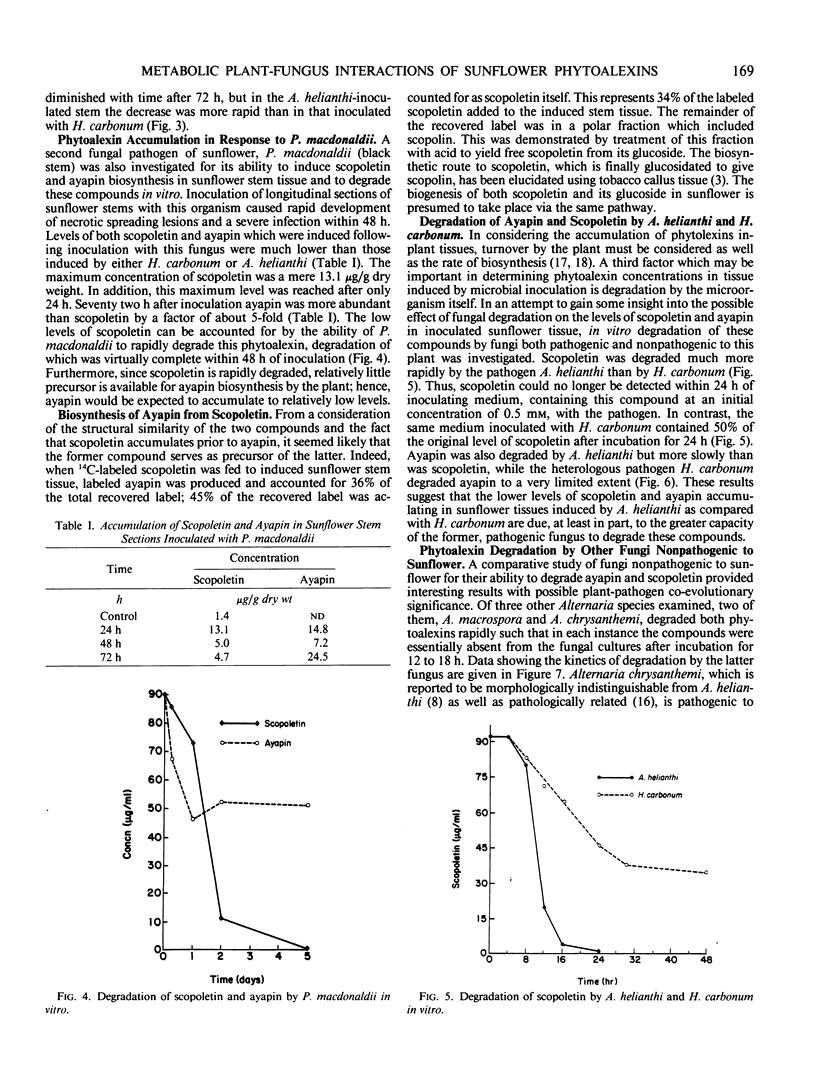
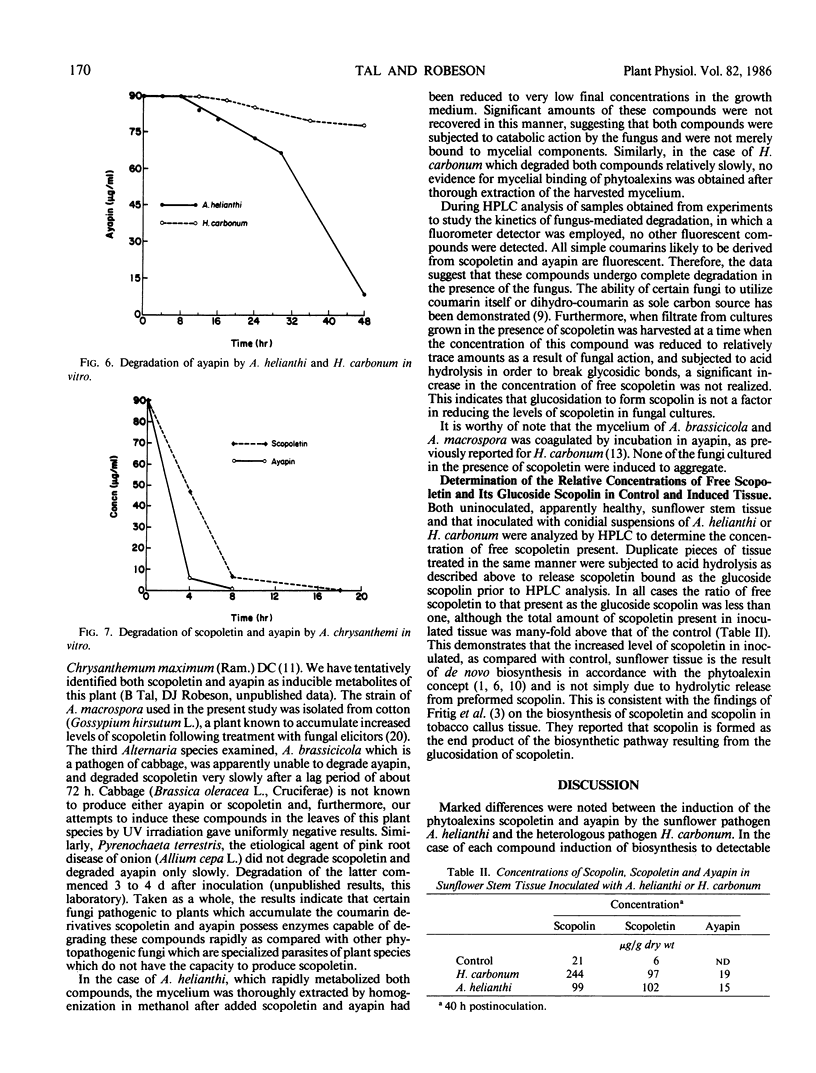
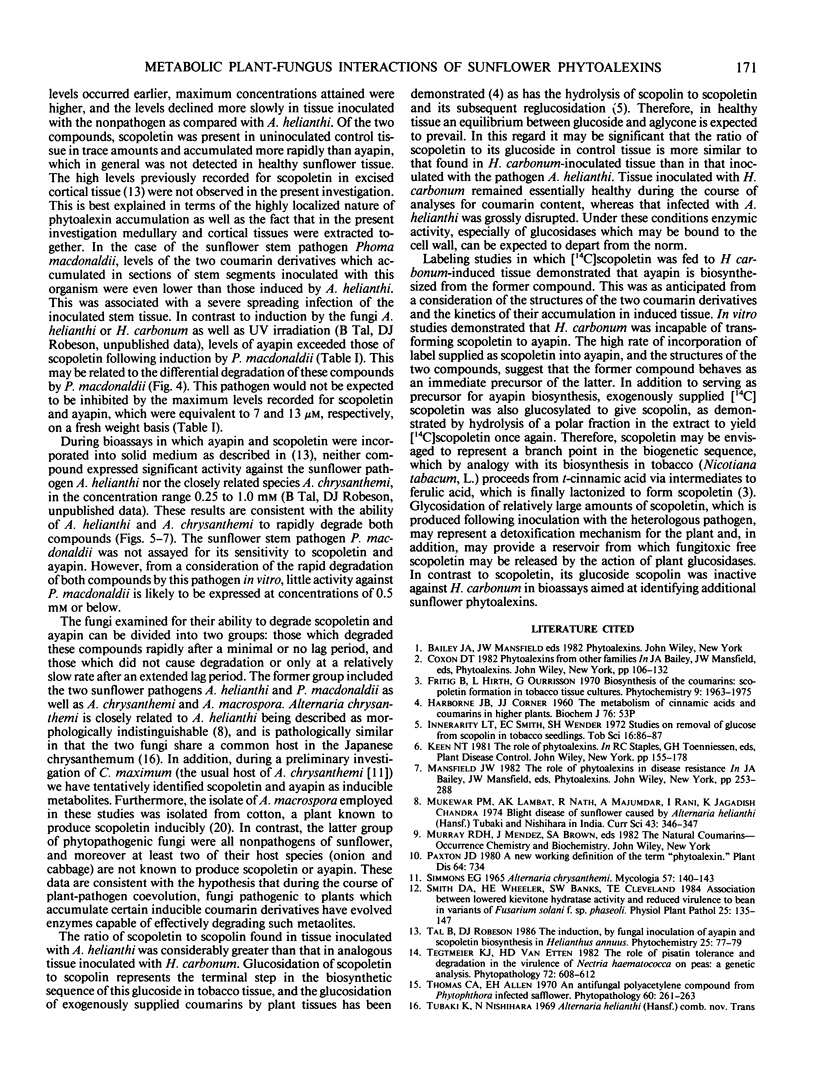
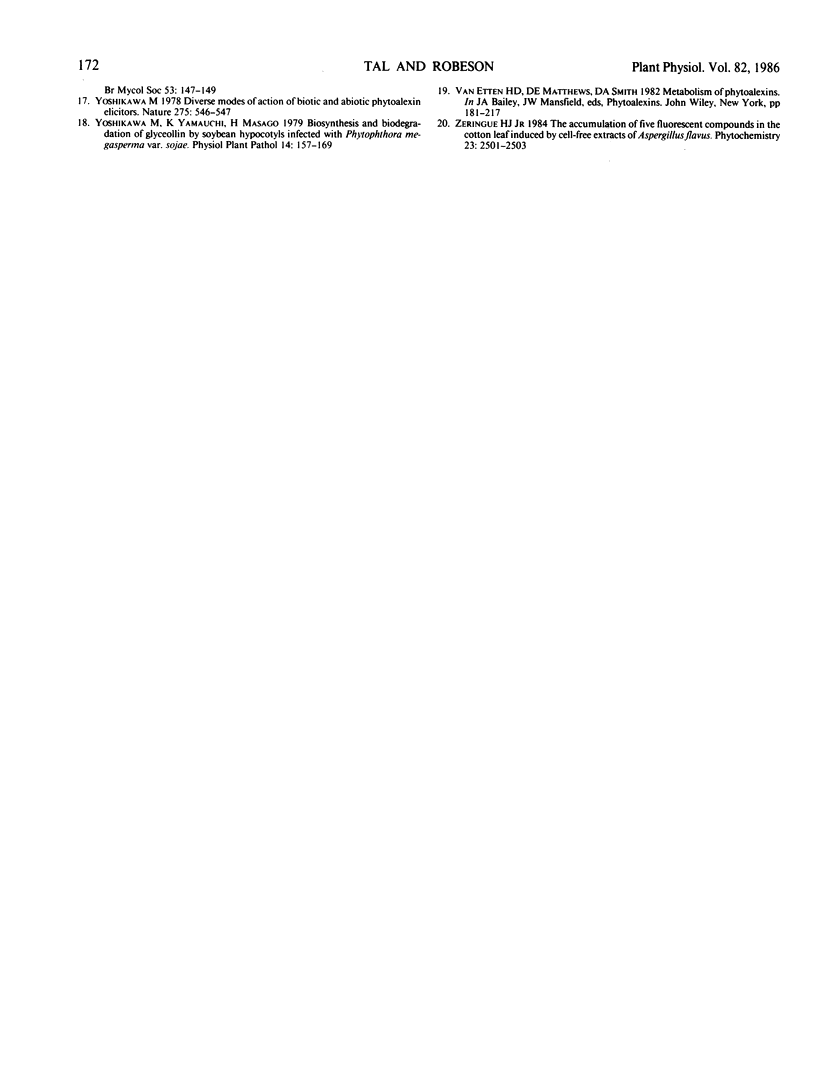
Selected References
These references are in PubMed. This may not be the complete list of references from this article.
- Thomas C. A., Allen E. H. An antifungal polyacetylene compound from phytophthora-infected safflower. Phytopathology. 1970 Feb;60(2):261–263. doi: 10.1094/phyto-60-261. [DOI] [PubMed] [Google Scholar]


